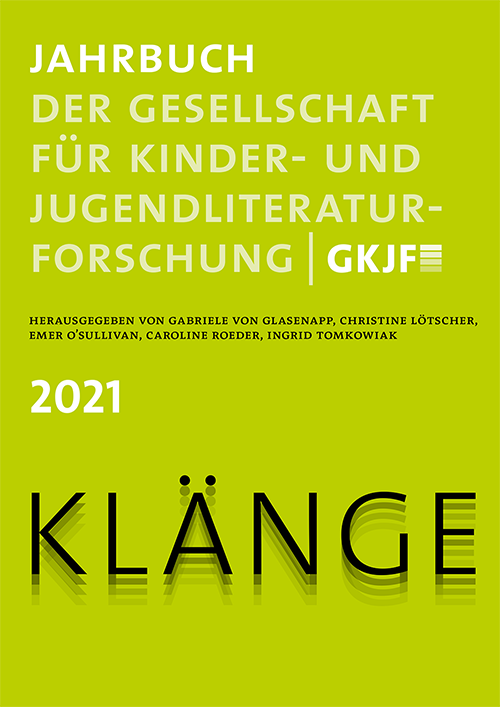Vom »Mozartbuch für die Jugend« zu »Little Amadeus«
Das Mozart-Bild in Kinderliteratur und -medien
DOI:
https://doi.org/10.21248/gkjf-jb.66Abstract
Artikelbeginn:
[English title and abstract below]
Das Bild Wolfgang Amadeus Mozarts ist nicht nur durch seine Musik sowie unzählige biografische und musikhistorische Darstellungen geprägt, bereits früh wird es – angefangen bei E.T.A. Hoffmanns Don Juan (1813) und Eduard Mörikes Mozart auf der Reise nach Prag (1855/56) – durch literarische Texte dämonisiert, romantisiert, idyllisiert, später dann entheroisiert, neutralisiert, sentimentalisiert, trivialisiert oder popularisiert. Betrachtet man das Mozart-Bild im Kinderbuch, so lassen sich zwei Phasen deutlich voneinander trennen: Wird Mozart in den 1940er- und 1950er-Jahren religiös verklärt und zum göttlichen Kind stilisiert, steht in den Mozart-Kinderbüchern und -medien im beginnenden 21. Jahrhundert eine entmystifizierte Sichtweise im Vordergrund., sondern vor allem auch an der breiten Diskussion und der Gründung neuer Institutionen.
From The Mozart Book for Youth to Little Amadeus
The Image of Mozart in Children’s Literature and Media
Mozart is the most represented composer in literature and media for children, since the biography of his childhood is of genuine interest for that age group. Since the mid-twentieth century, however, the image of Mozart in children’s literature and media has undergone a significant change. Whereas the historical narratives of the 1940s and 1950s worship him as divine child and genius, the literary portrayals of him from the 1970s and 1980s are considered a turning point. This coincides with a caesura in Mozart biography generally, which replaced the hitherto heroising depictions with ones of a childishly naive, obscene and exalted clown. In the early twenty-first century depictions, child protagonists undertake fantastic time travels and meet young Mozart as equals. Instead of adopting a nostalgic attitude towards the wunderkind, these texts are characterised by their explanatory approach towards the composer and his time. Children’s literature written around 2006, Mozart’s 250th birthday, individualises the image of the famous composer, utilising sophisticated literary forms of presentation. The animated television series Little Amadeus, to name one of many examples discussed in the article, gives insight into both the popularisation and the trivialisation of contemporary depictions of Mozart.
Downloads
Veröffentlicht
Ausgabe
Rubrik
Lizenz
Copyright (c) 2021 Jahrbuch der Gesellschaft für Kinder- und Jugendliteraturforschung

Dieses Werk steht unter der Lizenz Creative Commons Namensnennung - Nicht-kommerziell 4.0 International.





